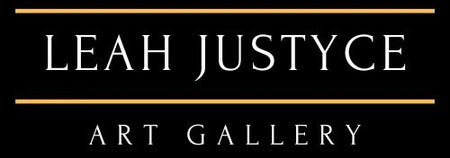
Understanding Art as a Tax Deduction in Australia
 Everlasting Love by Leah Justyce
Everlasting Love by Leah Justyce
Understanding Art as a Tax Deduction in Australia
Investing in art can be more than just an aesthetic decision; it can also offer financial benefits. In Australia, the tax system provides opportunities for art to be tax-deductible under specific circumstances. This blog post will explore the ways in which art can qualify for tax deductions, the rules and conditions that apply, and tips for maximizing these benefits.
Tax Deductions for Businesses
1. Art as a Depreciable Asset:
Businesses can purchase art to display in their offices or premises, treating it as a depreciable asset. This allows for the deduction of depreciation expenses over the asset’s useful life. The Australian Taxation Office (ATO) typically considers art to have a lifespan of several years, during which its value can be depreciated.
2. Instant Asset Write-Off:
For small businesses, the instant asset write-off scheme can be particularly advantageous. Under this scheme, eligible businesses can immediately deduct the cost of purchasing artwork, provided it meets the criteria and falls below the threshold, which as of recent updates is $150,000.
3. Art as a Marketing Expense:
If art is used in a way that directly relates to the business’s operations, such as in marketing or promotional activities, the expense can be considered a marketing cost. For example, commissioning art that features prominently in advertising campaigns can qualify for a deduction.
Tax Deductions for Individuals
1. Art Donations:
Individuals can donate art to public art galleries, museums, or institutions listed on the Register of Cultural Organizations. These donations can be claimed as tax deductions, often based on the market value of the artwork. This not only supports the arts but also offers a significant tax benefit to the donor.
Gifts and Cultural Gifts Program:
The Cultural Gifts Program encourages the donation of culturally significant items, including artwork, to public institutions. Under this program, donors can receive a tax deduction for the market value of the gift, and any unused portion of the deduction can be carried forward for up to five years.
Conditions and Compliance
To ensure that art purchases and donations qualify for tax deductions, it’s essential to adhere to the following guidelines:
Valuation Requirements: Proper valuation of artwork is crucial. For tax deduction purposes, the ATO may require valuations from approved valuers to determine the market value of the donated art.
Documentation: Maintain detailed records of all transactions, including purchase receipts, valuation reports, and correspondence with institutions if donating art. Accurate documentation is vital for substantiating claims in case of an audit.
Purpose and Usage: Ensure that the primary purpose of acquiring the art aligns with the criteria set by the ATO. For businesses, this means that the art should be used in a manner that supports the business’s operations or marketing efforts.
Compliance with ATO Guidelines: Regularly review and comply with the latest ATO guidelines on art-related tax deductions. Tax laws and thresholds can change, so staying informed is key to maximizing benefits.
Maximizing Tax Benefits Consult with Experts: Engaging with tax professionals and art consultants can help navigate the complexities of art as a tax-deductible asset. They can provide valuable advice on compliance, valuation, and strategic planning.
Strategic Purchases: Consider the timing and purpose of art purchases to align with tax planning strategies. For example, leveraging the instant asset write-off scheme towards the end of the financial year can optimize tax outcomes.
Donation Planning: Plan art donations to maximize tax benefits, considering the Cultural Gifts Program and other donation schemes. Spreading out donations over multiple years can also help in managing tax liabilities effectively.
Conclusion
Art can be more than just a visual enhancement; it can also serve as a strategic financial asset. In Australia, the tax system offers various opportunities for businesses and individuals to benefit from art-related tax deductions. By understanding the rules, maintaining proper documentation, and seeking professional advice, art collectors and businesses can maximize these benefits while supporting the vibrant cultural landscape.
Whether you’re a business looking to enhance your workspace or an individual with a passion for collecting, understanding the tax implications of art can turn your passion into a smart financial decision.

